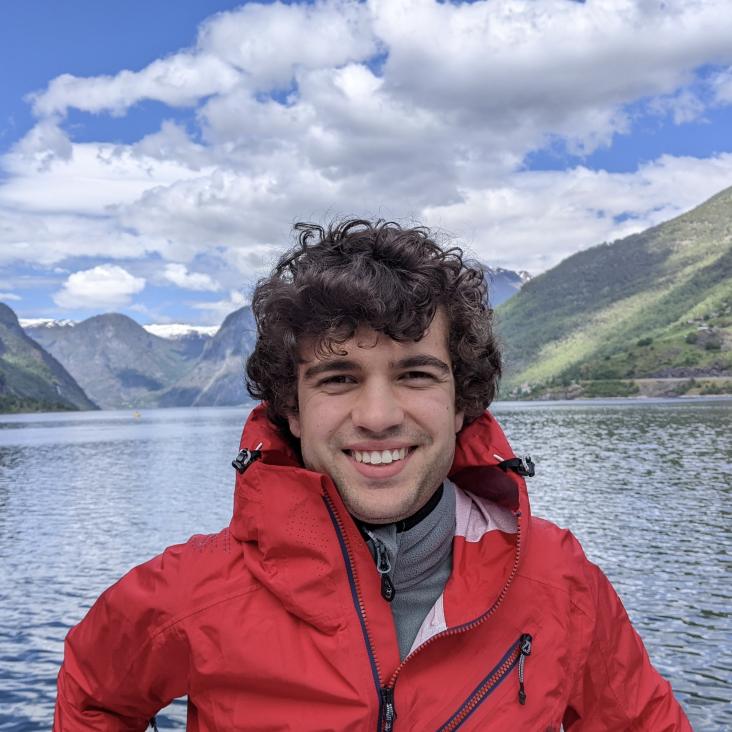Novel Physics of Escaping Secondary Atmospheres May Shape the Cosmic Shoreline
arXiv:2412.05188 [astro-ph.EP]
Abstract:
Recent James Webb Space Telescope observations of cool, rocky exoplanets reveal a probable lack of thick atmospheres, suggesting prevalent escape of the secondary atmospheres formed after losing primordial hydrogen. Yet, simulations indicate that hydrodynamic escape of secondary atmospheres, composed of nitrogen and carbon dioxide, requires intense fluxes of ionizing radiation (XUV) to overcome the effects of high molecular weight and efficient line cooling. This transonic outflow of hot, ionized metals (not hydrogen) presents a novel astrophysical regime ripe for exploration. We introduce an analytic framework to determine which planets retain or lose their atmospheres, positioning them on either side of the cosmic shoreline. We model the radial structure of escaping atmospheres as polytropic expansions - power-law relationships between density and temperature driven by local XUV heating. Our approach diagnoses line cooling with a three-level atom model and incorporates how ion-electron interactions reduce mean molecular weight. Crucially, hydrodynamic escape onsets for a threshold XUV flux dependent upon the atmosphere's gravitational binding. Ensuing escape rates either scale linearly with XUV flux when weakly ionized (energy-limited) or are controlled by a collisional-radiative thermostat when strongly ionized. Thus, airlessness is determined by whether the XUV flux surpasses the critical threshold during the star's active periods, accounting for expendable primordial hydrogen and revival by volcanism. We explore atmospheric escape from Young-Sun Mars and Earth, LHS-1140 b and c, and TRAPPIST-1 b. Our modeling characterizes the bottleneck of atmospheric loss on the occurrence of observable Earth-like habitats and offers analytic tools for future studies.
The Cosmic Shoreline Revisited: A Metric for Atmospheric Retention Informed by Hydrodynamic Escape
arXiv:2504.19872 [astro-ph.EP]
Abstract:
The "cosmic shoreline", a semi-empirical relation that separates airless worlds from worlds with atmospheres as proposed by Zahnle & Catling (2017), is now guiding large-scale JWST surveys aimed at detecting rocky exoplanet atmospheres. We expand upon this framework by revisiting the shorelines using existing hydrodynamic escape models applied to Earth-like, Venus-like, and steam atmospheres for rocky exoplanets, and we estimate energy-limited escape rates for CH4 atmospheres. We determine the critical instellation required for atmospheric retention by calculating time-integrated atmospheric mass loss. Our analysis introduces a new metric for target selection in the Rocky Worlds DDT and refines expectations for rocky planet atmosphere searches in Cycle 4. Exploring initial volatile inventory ranging from 0.01% to 1% of planetary mass, we find that its variation prevents the definition of a unique clear-cut shoreline, though non-linear escape physics can reduce this sensitivity to initial conditions. Additionally, uncertain distributions of high-energy stellar evolution and planet age further blur the critical instellations for atmospheric retention, yielding broad shorelines. Hydrodynamic escape models find atmospheric retention is markedly more favorable for higher-mass planets orbiting higher-mass stars, with carbon-rich atmospheres remaining plausible for 55 Cancri e despite its extreme instellation. Dedicated modeling efforts are needed to better constrain the escape dynamics of secondary atmospheres, such as the role of atomic line cooling, especially for Earth-sized planets. Finally, we illustrate how density measurements can be used to statistically test the existence of the cosmic shorelines, emphasizing the need for more precise mass and radius measurements.
JWST NIRSpec finds no clear signs of an atmosphere on TOI-1685 b
(2025)
JWST NIRSpec finds no clear signs of an atmosphere on TOI-1685 b
Monthly Notices of the Royal Astronomical Society Oxford University Press (OUP) (2025) staf2187
Abstract:
Abstract Determining the prevalence of atmospheres on terrestrial planets is a core objective in exoplanetary science. While M dwarf systems offer a promising opportunity, conclusive observations of terrestrial atmospheres have remained elusive, with many yielding flat transmission spectra. We observe four transits of the hot terrestrial planet TOI-1685 b using JWST’s NIRSpec G395H instrument. Combining this with the transit from the previously-observed phase curve of the planet with the same instrument, we perform a detailed analysis to determine the possibility of an atmosphere on TOI-1685 b. From our retrievals, the Bayesian evidence favours a simple flat line model, indicating no evidence for an atmosphere on TOI-1685 b, in line with results from the phase curve analysis. Our results show that hydrogen-dominated atmospheres can be confidently ruled out. For heavier, secondary atmospheres we find a lower limit on the mean molecular weight of ≳ 10, at a significance of ∼5σ. Pure CO2, SO2, H2O, and CH4 atmospheres, or a mixed secondary atmosphere (CO + CO2 + SO2) could explain the data (Δln Z < 3). However, pure CH4 atmospheres may be physically unlikely, and the pure H2O and CO2 cases require a high-altitude cloud, which could also be interpreted as a thin cloud-free atmosphere. We discuss the theoretical possibility for different types of atmosphere on this planet, and consider the effects of atmospheric escape and stellar activity on the system. Though we find that TOI-1685 b is likely a bare rock, this study also highlights the challenges of detecting secondary atmospheres on rocky planets with JWST.The Cosmic Shoreline Revisited: A Metric for Atmospheric Retention Informed by Hydrodynamic Escape
The Astrophysical Journal American Astronomical Society 992:2 (2025) 198


